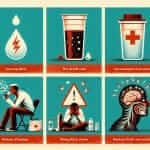“It is assumed that…” – a phrase frequently encountered in academic texts and discussions. But how often does it appear in the IELTS exam, and how can you utilize it to boost your score? Let’s delve into the nuances of this construction and explore its applications in various sections of the IELTS.
Here are a few examples to illustrate how “it is assumed that” functions in different IELTS contexts:
Speaking Part 3:
- “It is generally assumed that technology simplifies our lives, but it also brings new challenges. What’s your opinion?” (This introduces a common belief as a starting point for discussion.)
Writing Task 2:
- “Some people argue that space exploration is a waste of resources. It is assumed that these funds could be better spent on addressing problems here on Earth.” (This acknowledges a contrasting viewpoint before presenting a counter-argument.)
Listening Section 2:
- “The museum curator stated, ‘It is widely assumed that this artifact dates back to the 15th century, although recent research suggests it could be even older.'” (This highlights a potential misconception based on common assumptions.)
Understanding “It Is Assumed That”
This structure is employed to introduce a widely held belief or assumption, often serving as a springboard for further discussion or analysis. It suggests that the statement following it represents a generally accepted perspective, even if it might not be explicitly stated or universally acknowledged.
Usage and Grammar
The phrase “it is assumed that” follows a specific grammatical pattern:
It + to be (in the appropriate tense) + assumed + that + clause
Example:
- It is assumed that the economy will improve next year.
- It was assumed that the concert would be canceled due to the storm.
- It has been assumed for years that multitasking increases productivity.
 IELTS Exam Preparation
IELTS Exam Preparation
Applications in Different IELTS Sections
- Writing Task 2: This phrase can effectively introduce a contrasting viewpoint or a generally accepted notion that you intend to challenge or support.
- Example: “While it is often assumed that globalization benefits all nations equally, the reality is far more complex.”
- Speaking Part 3: Employ this structure to initiate a discussion based on a common belief or assumption.
- Example: “It is commonly assumed that success is solely determined by hard work. Do you agree?”
- Listening: Pay attention to this phrase as it might signal a speaker challenging a common assumption or highlighting a potential misconception.
Achieving Higher Bands with “It Is Assumed That”
Using this phrase correctly and strategically can demonstrate your command of complex grammatical structures and enhance your ability to express nuanced ideas, contributing to a higher score in the Grammatical Range and Accuracy criterion.
Tips for Effective Use:
- Variety is Key: Instead of repeatedly using “it is assumed that,” consider synonyms like “it is widely believed,” “it is generally accepted,” or “conventional wisdom suggests.”
- Context is Crucial: Ensure the assumption you’re introducing is relevant to the topic and contributes to the overall coherence of your writing or speaking.
- Support Your Claims: After introducing an assumption, provide evidence or reasoning to support or refute it.
Common Errors to Avoid
- Incorrect Tense Usage: Ensure the verb “to be” agrees with the tense of the sentence.
- Lack of Clarity: Make sure the assumption you’re introducing is clear and easily understood.
- Overuse: Avoid using “it is assumed that” excessively, as it can make your writing or speaking sound repetitive.
Conclusion
Mastering the use of “it is assumed that” and its variations can significantly enhance your ability to articulate complex ideas and engage critically with diverse perspectives in the IELTS exam. By understanding its grammatical structure, applications, and potential pitfalls, you can confidently utilize this phrase to showcase your linguistic prowess and boost your overall band score. Remember to practice incorporating this phrase in your writing and speaking to ensure fluency and accuracy on test day.

